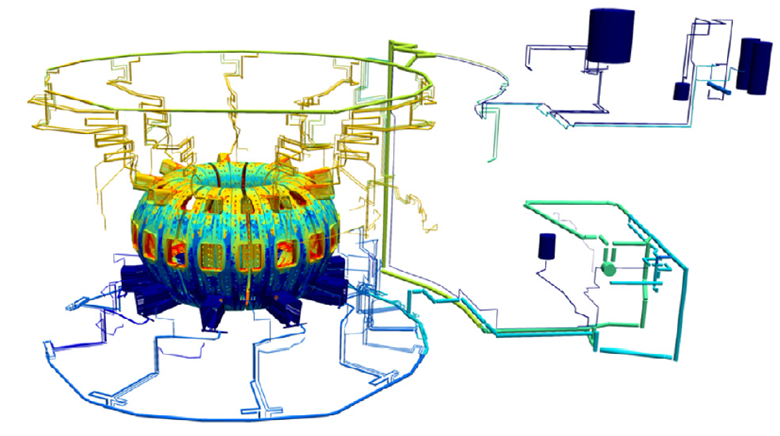FLUNED
Flowing fluids are commonly found in reactors, either as coolant, breeder or even fuel. When they pass through a neutron irradiation region (i.e. the in-vessel components), they get activation following the transmutation of their isotopes. Once outside, they spread the radioisotopes, sometimes at high speed, turning the circuit into a radiation source. It is commonly a powerful source due to the short half-lives and the high energy of the decay particles. Depending on the facility and the region of the circuit, the radiation field can be dominated by this radiation source.
Solving the activation equation requires a characterization of the time exposure to certain flux by certain fluid parcels. An approximation commonly found is the so-called moving fluid-parcel. Experiments indicate good agreement in the case of pipes with circular section containing a turbulent flow, what is a common situation for a circuit in general. But this assumption fails big in any other situation, which is, at the same time, often the case for components subjected to irradiation (a vacuum vessel, in example).
FLUNED solves this problem. It is a modification of OpenFoam to couple 3D radiation fields (computed with MCNP6) and CFD through unstructured meshes. Note CFDs can be imported from any CFD software, such as ANSYS FLUENT. It permits the resolution of the activation equations at voxel size and shows excellent agreement with experiments that have been commissioned ad hoc. FLUNED is assisted by scripts for Spaceclaim and an implementation in python of the moving parcel assumption (so called FLUNED-SL). In joint FLUNED plus FLUNED-SL is a complete and validated software package that permit predicting the radiation source term produced in a circuit subjected to irradiation and its spreading across the circuit.
